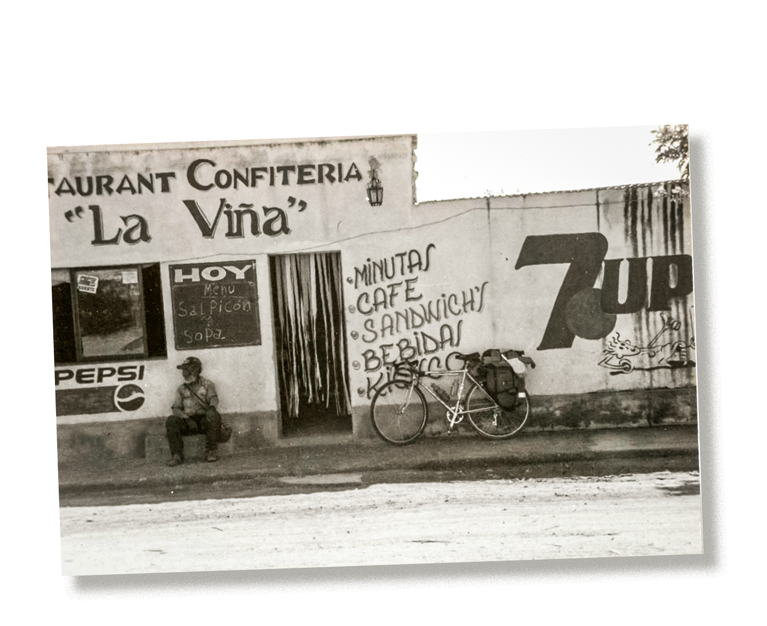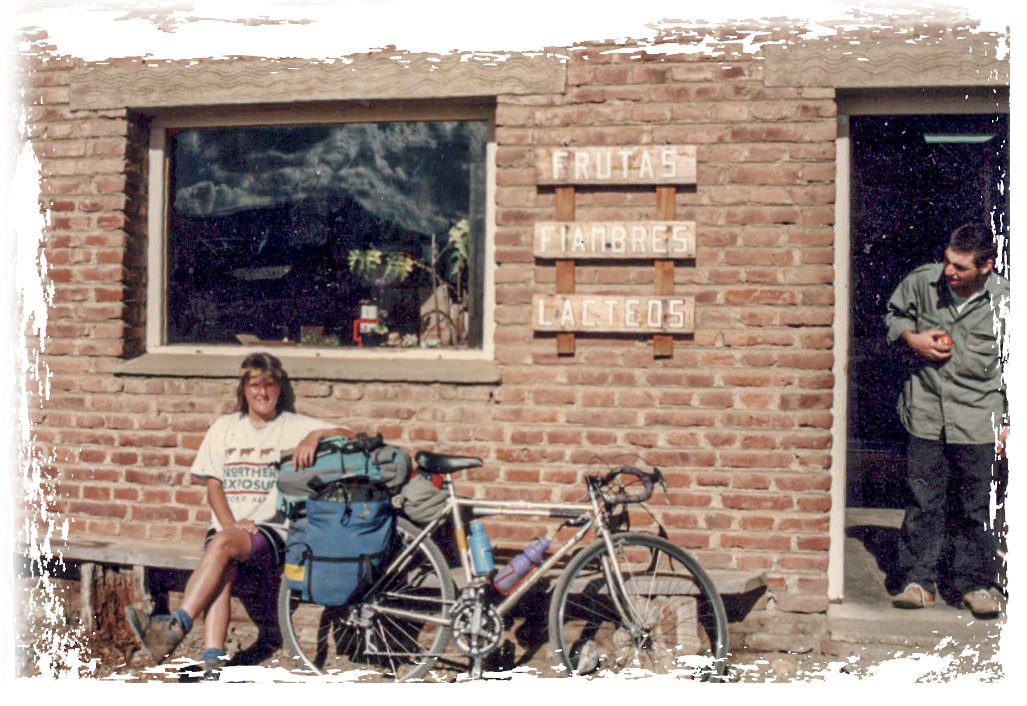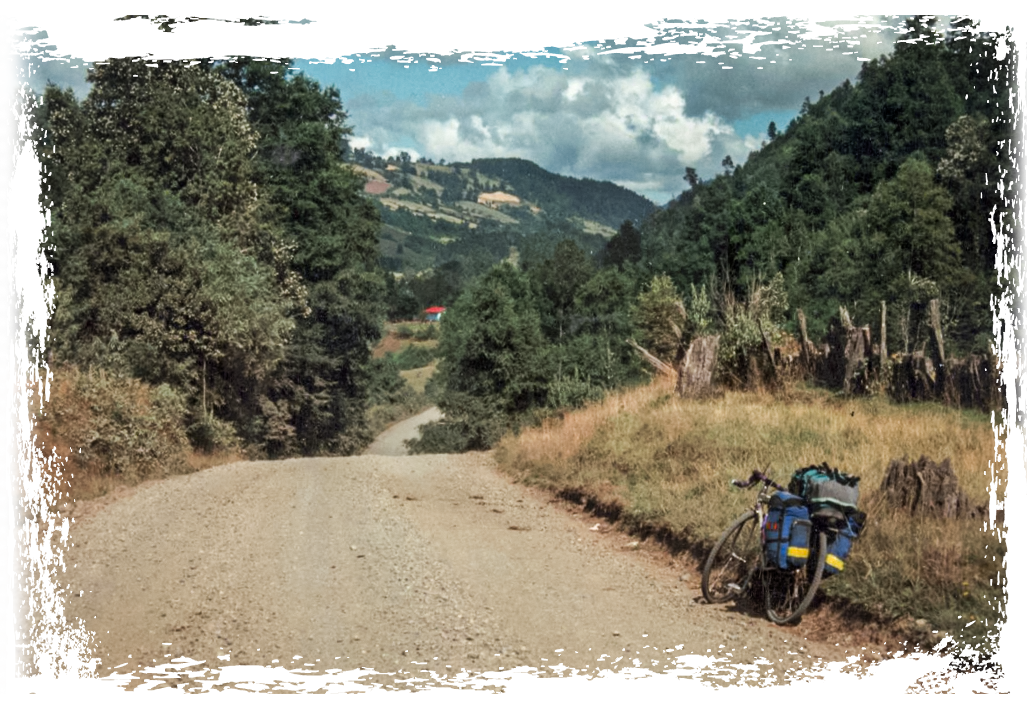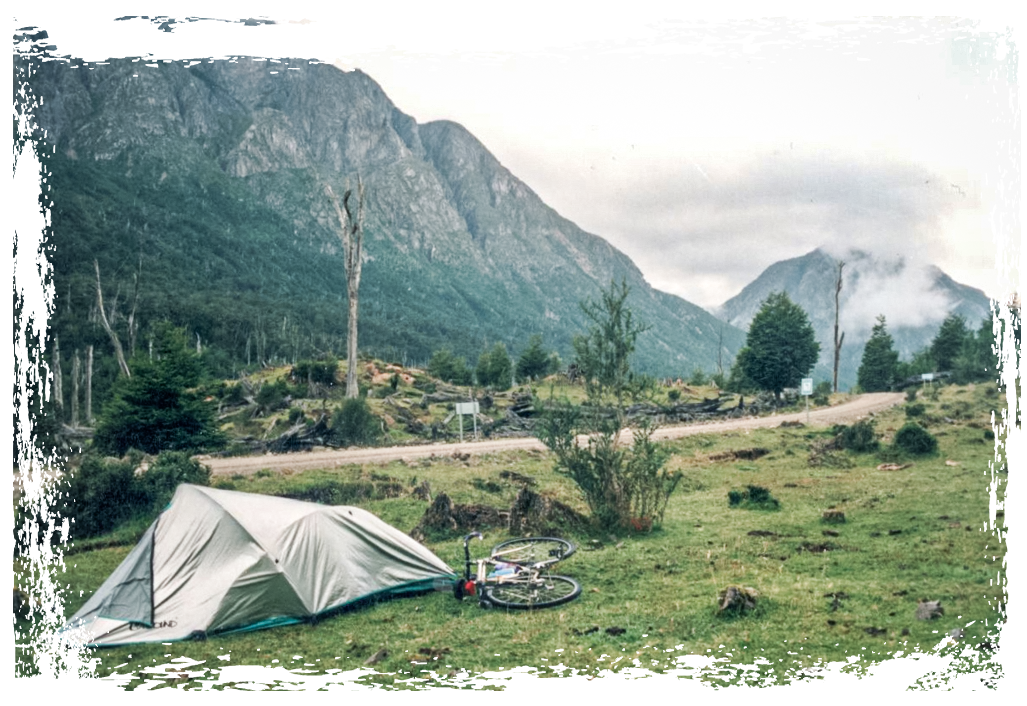
Anik See traveled the world by bike
‘It’s a way to go back to basics’
If she could go back in time, she would like to return to a campground by the beach in Guadalajara on the night of Mexican Easter, many years ago. Anik See was biking through the country that week when she met the forty-eight members of the Cruz family, who had gathered from all corners of Mexico to celebrate. They welcomed her, a stranger, with open arms and bowls of steaming hot rice.
Amid house-sized tents and large pots of red chili sauce, with children running around as aunts and uncles bickered in their usual way, See discovered a new sense of family, one filled with joy and comfort. ‘They were just so welcoming. They invited me to sit at their table and eat together. It felt like I had always been there.’
The food, says the media studies lecturer, was amazing. ‘It may sound like a cliche, but you can really tell when something has been made with care. And that’s the thing about Mexican cuisine: it’s an expression of care for your family.’ And there, in one of the most ‘flavourful’ places in the world, See fell in love with traveling.

Looking outwards
When she wasn’t on a trip, See worked as a solutions-focused freelance journalist, as she still does. She has been published in magazines like The Walrus and National Geographic and has produced several audio documentaries. See is also the author of four books.
I wanted to prove that it was totally fine to travel alone as a woman
This wasn’t her first time in Mexico, though. Growing up in Canada, she’d often visit with her family. But while the average Canadian tourist would spend a week at a resort somewhere on the beach, her parents were keen to go beyond that.
See remembers driving around villages, befriending locals, and eating traditional food in their homes. ‘Traveling was never about us, it was always about other people or places. When we would go on a family holiday, whether it was Germany or Mexico, there was always time carved out to get outside, to look outwards’, she says.
Female traveler
It instilled in her a wonder for places, and also the trust that, more often than not, people are friendly and generous. With this in mind, she started traveling solo. Some people would laugh at her, calling her naive.
‘But I was looking around me and seeing all these men doing it, and I thought, should I be denied freedom and pleasure simply because of my gender?’
There’s a long history of people, men as well as women, telling women what they can’t do. ‘But there have always been female solo travelers’, See explains. ‘So part of why I did it was not only to see other cultures and meet new people, but to prove to others that it was totally fine to travel alone as a woman.’

Penelope
That’s how it started, with an 18-year-old Anik, short and slender, just as she appears now, though with dark brown hair and the customary 80s/90s bangs. She went on her first solo trip from Munich to Stockholm with her bike, Penelope – named after Homer’s Odyssey. ‘She was the loyal one who stayed behind while Ulysses was off for twenty years.’
On your bike, you have to pay attention the entire time
Bought when See was around 16, the touring bike sparked her love for biking. Penelope would end up as a faithful companion on her travels for seven years, before she was stolen and replaced with an identical bike.
Any chance See got some time off work, she and Penelope would go on to their next adventure with just a tent and a backpack. They climbed the steep mountains of Patagonia and traversed the buzzing street markets in Thailand, the massive labyrinths of alleyways in Iran, the vivacious small towns in Georgia, and the lush vegetation of Sri Lanka, their last trip together.
‘I like the pace of traveling by bike. I enjoy going 20 kilometers an hour because you actually see stuff. And I’m not much of a walker. When you’re on your bike, you have to pay attention the entire time’, she says. ‘It’s also a great icebreaker. For me, it opened up a world of possibilities.’
Safety concerns
It wasn’t every day that you’d see a woman biking alone in the middle of nowhere, especially in the 90s. So it’s no surprise that people stopped and stared, asked her questions and helped her out.
Like that time in Argentina, on ‘the worst road in the entire country’, when a minivan pulled over and two guys got out to ask her in disbelief what she was doing. And then, just as easily, invited her to an asado, a traditional Argentinian barbecue. ‘I ended up eating some of the best grilled meat with them.’
Didn’t she fear for her safety? ‘Depending on the day, depending on your mood, depending on your outlook in life that could have set off a lot of alarm bells: two guys, remote road, middle of nowhere. But I didn’t think that way then.’
It’s not that she’s trying to downplay the safety concerns, because traveling alone is not without its dangers. ‘The scariest things that happened to me were in Canada, like people following me right up a long mountain pass, pulling over and waiting till I passed again. But they did not happen in places that we like to call unsafe’, she says.

Friendly locals
And they didn’t happen often either, in part because of the bike, See thinks. ‘A woman on her bike looks independent, but also sweaty and exhausted, which is not attractive’, she says, laughing. ‘And people recognised what I was doing and they wanted to help me, to give me food, or a place to sleep.’
People recognised what I was doing and they wanted to help me
The world is a much nicer place than we’re told, she thinks. ‘Good news never makes the headlines. So if you’re basing your judgment of countries strictly on news, it’s difficult to have a sense of what the people of that country are really like.’
When she cycled Iran in 1998 with her then-boyfriend, the locals frequently stressed that their views were not those of the government. ‘That really opened my eyes to how these two things are quite separate. When you’re traveling through a country, you’re not dealing with the government, you’re dealing with the local people, who are usually friendly and welcoming.’
Also, the rewards of traveling alone far surpass any obstacles, be it cultural or physical.
Simplicity
There’s a certain feel to it, See thinks: she calls it saudade in one of her later books, the Portuguese word for a feeling of nostalgia, of longing for a beloved yet absent something.
To See, that something is simplicity, and her trips are a quest for that. ‘You’re traveling to isolated places, with only what you have on your bike. It’s a way to go back to basics, giving yourself the time to learn more about yourself, but also about the people and the place itself’, she says. ‘It’s about absorbing a culture, a landscape, in a raw way, without someone else’s interference.’
When she started a family, her solo travels stopped. Now, they mostly travel together. But See doesn’t think it’s the end of solo journeys for her. She looks over her shoulder, at where her husband is sitting. She smiles. ‘I’m kind of planning my next trip, but don’t have a destination yet.’